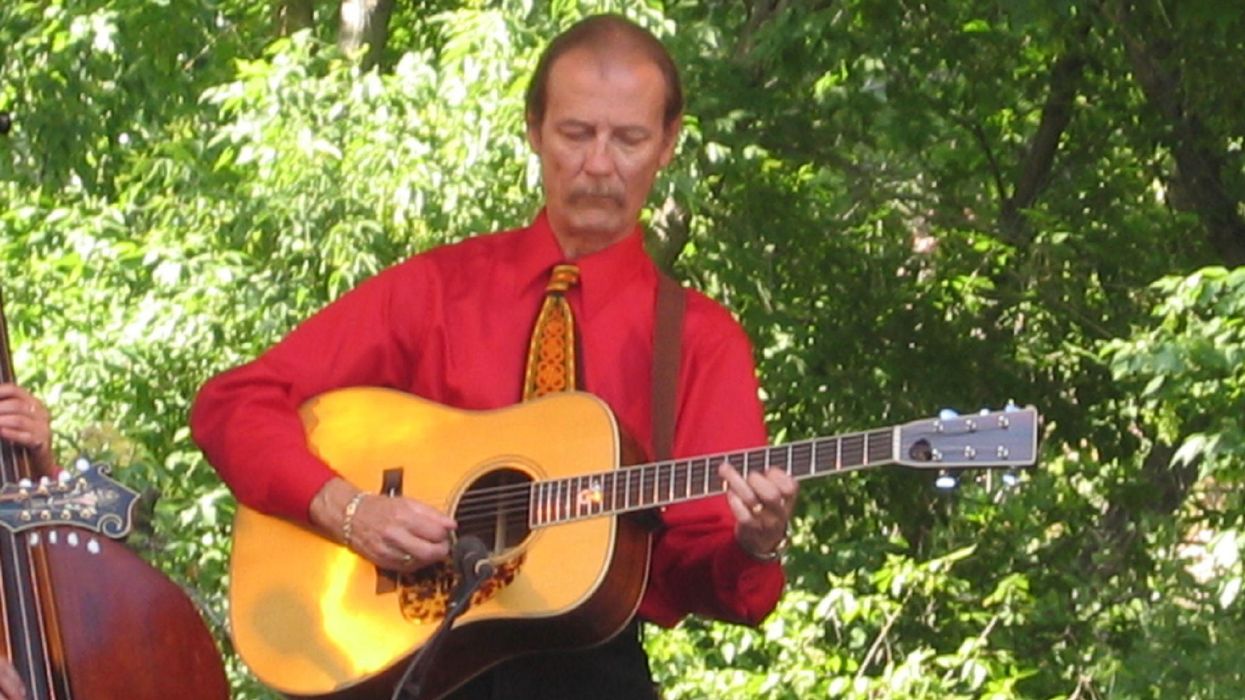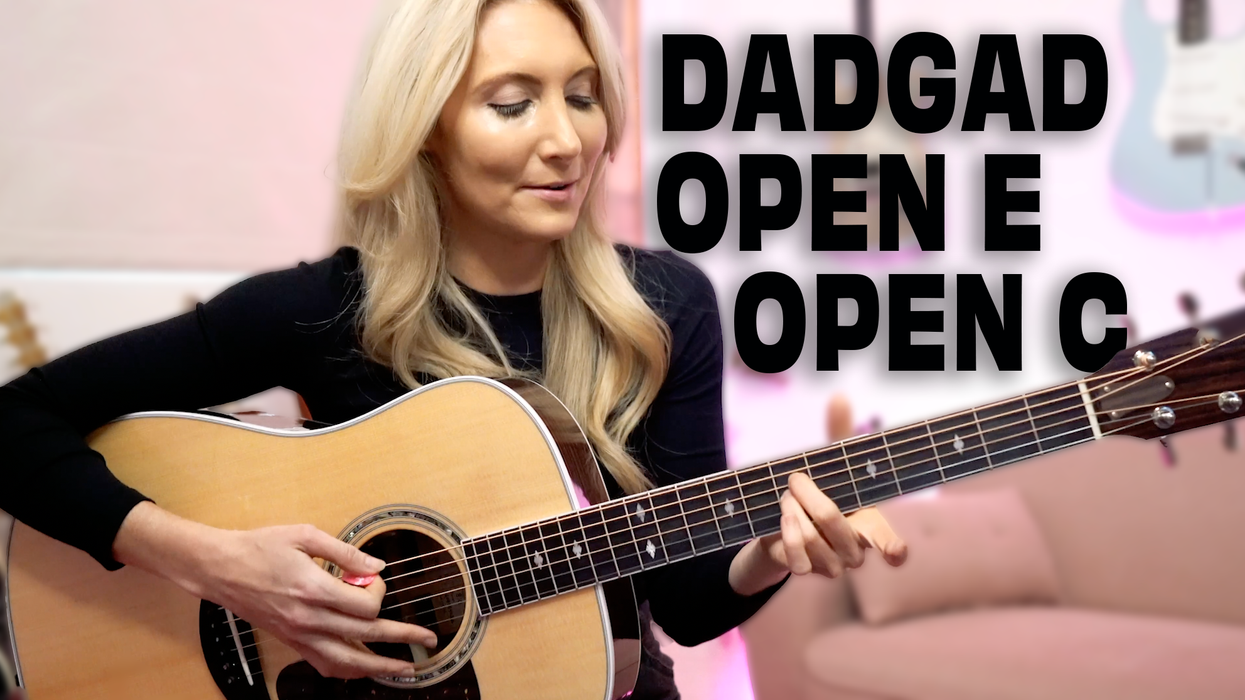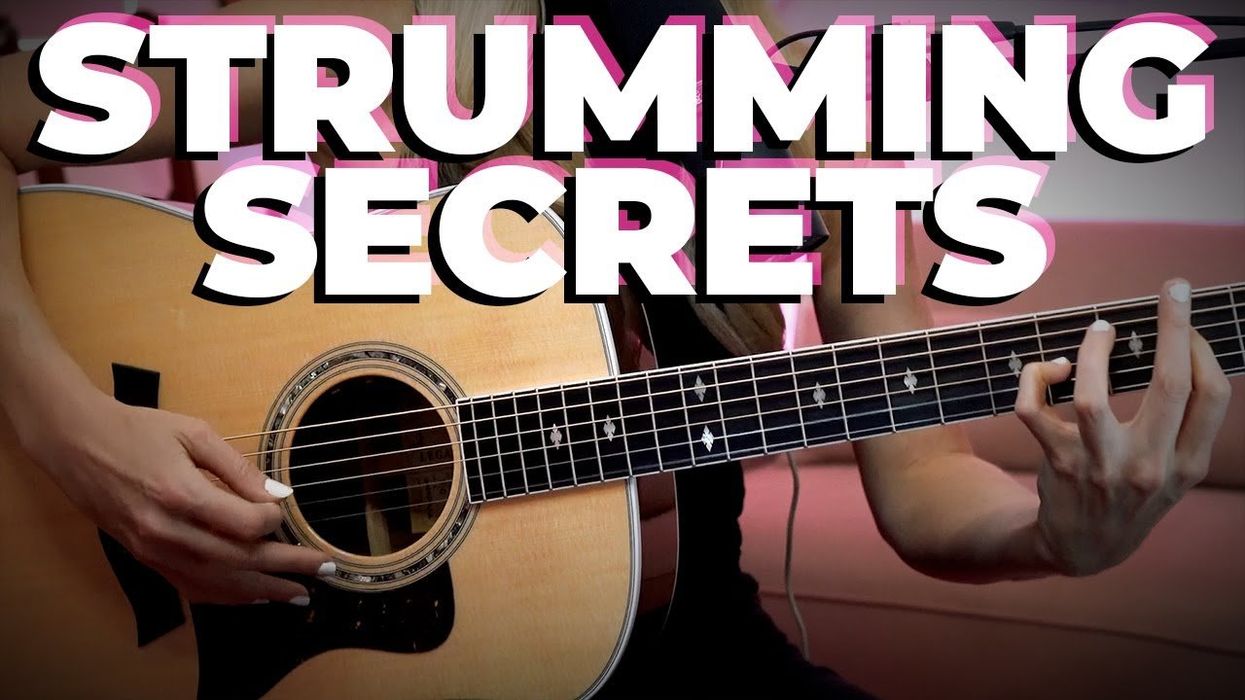Decades ago, while working as a classical
flamenco guitar maker in Spain,
Michael Dunn ran across a steel-string
guitar with a D-shaped soundhole and an
interior sound box and reflector. “I thought
this was a whole new world,” says Dunn.
He took measurements of a similar guitar
he found in London, and from there, the
experiments began. The Canadian luthier
has spent most of his life experimenting
with interior resonators. “I’ve taken that
technology and modified it, reshaped it,
and re-jigged it in every imaginable way,”
says Dunn.
The original interior sound box idea
came from Mario Maccaferri in the 1930s.
Maccaferri placed a smaller sound chamber
into the main body of his guitars. Based
on Maccaferri’s patented design, Dunn’s
interior sound boxes are typically mandolin-sized
boxes attached to the underside of
the soundhole. These chambers have their
own ports that redirect sound waves into a
reflector. This acoustic technology allows
the instrument to project more at higher
frequencies, according to Dunn.
As a Django Reinhardt fan, Dunn builds
a lot of Selmer-style guitars. Nearly half
of the guitars he makes have his interior
resonator boxes. However, he additionally
builds archtops, Weissenborn-inspired lap
slide guitars, harp guitars, OM guitars, and
other types of instruments. Dunn is still
thinking outside the box and implementing
innovative designs. He is currently working
on a cello that a musician can wear while
playing. “They give me all the crazy stuff to
build,” says Dunn with a laugh.
Dunn has made well over 500 instruments
in the last 45 years. “I try to make
the guitar as responsive and balanced as I
can,” he says. “By responsive, I mean the
sound of the guitar is what the musician is
going to do with it—not what I did to it. I
think a good guitar should be able to sound
a half dozen different ways in the hands of
a half dozen good players.”
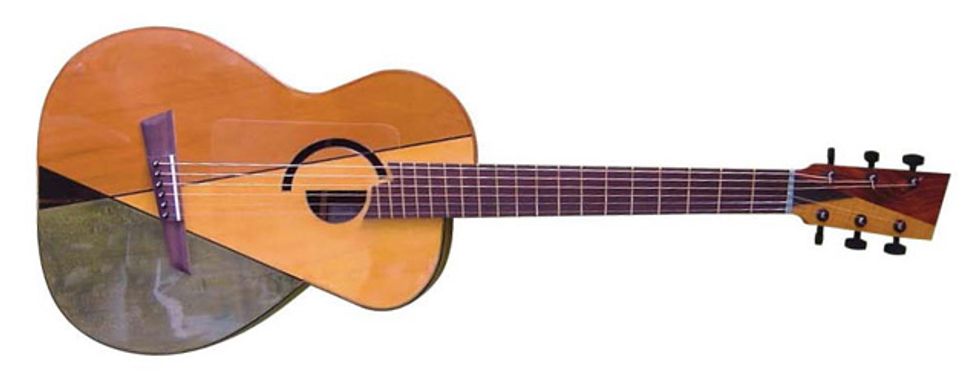
Inspired by Cubist artist Juan Gris, this guitar looks off-centered and as if it’s constructed from various parts of other guitars. It features fanned frets and a soundboard made of Sitka spruce and cedar. The back comprises panels of rosewood, ironwood, ebony, bloodwood, blackwood, satinwood, purpleheart, and sumac. Instead of the traditional soundhole, there is a rear “sound slot,” which is formed by one panel being more elevated than another.
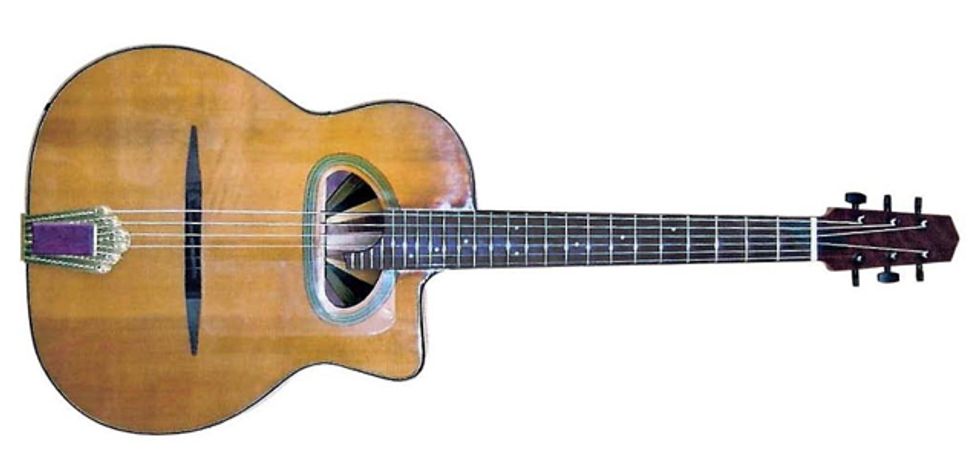
This Gypsy guitar features a D-shaped soundhole and a 25 3/16" scale length. It also sports Dunn’s internal sound chamber, which enhances the guitar’s upper frequencies. The front wall of the interior sound box is located on the straight side of the “D,” and the sound box has a hole that directs sound into the parabolic reflector.
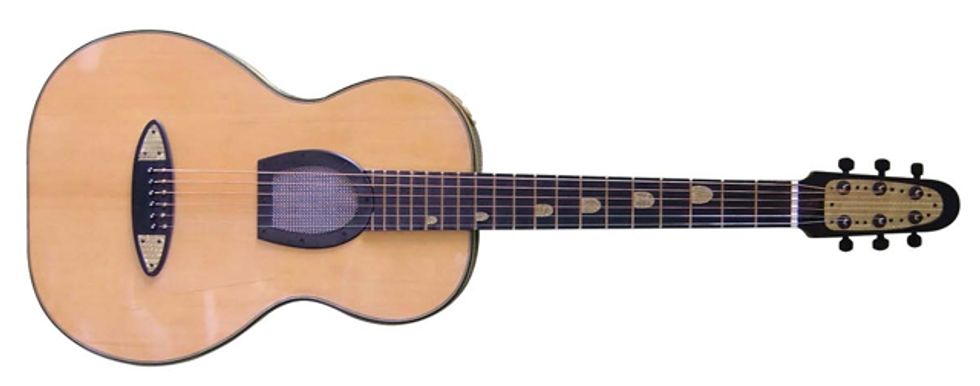
Dating back to the early 1900s, French Bugatti automobiles were exotic, handbuilt touring machines. Dunn’s Bugatti guitar is made of ebony and satinwood with a yellow cedar soundboard inspired by Bugatti cars that were painted black and yellow. This guitar’s body is 19" long with a 14" lower bout. Two panels on the back represent the sides of the car’s hood, and the horseshoe-shaped soundhole is modeled after the car’s grille.
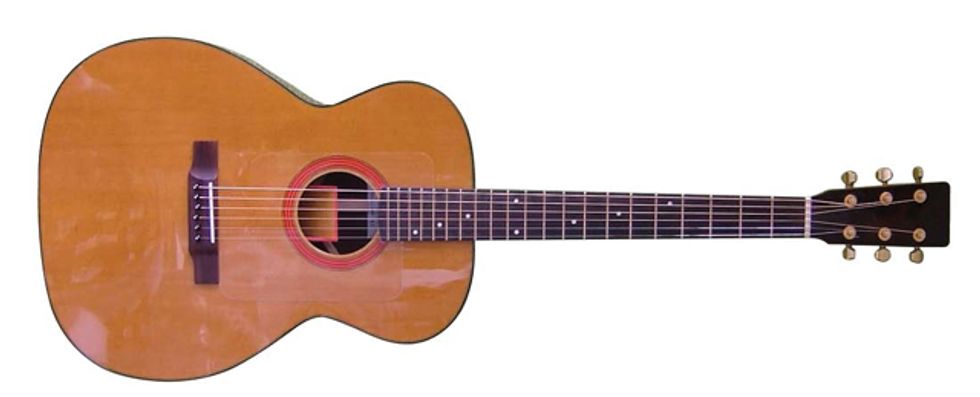
This orchestra-model guitar is the most recent addition to Dunn’s line. It looks like a traditional OM guitar, but features an internal sound box and refl ector. Knowing that the market for Gypsy and Selmer-style guitars is more limited than that for OM guitars, Dunn hopes to increase awareness of his interior resonators with his new OM design.
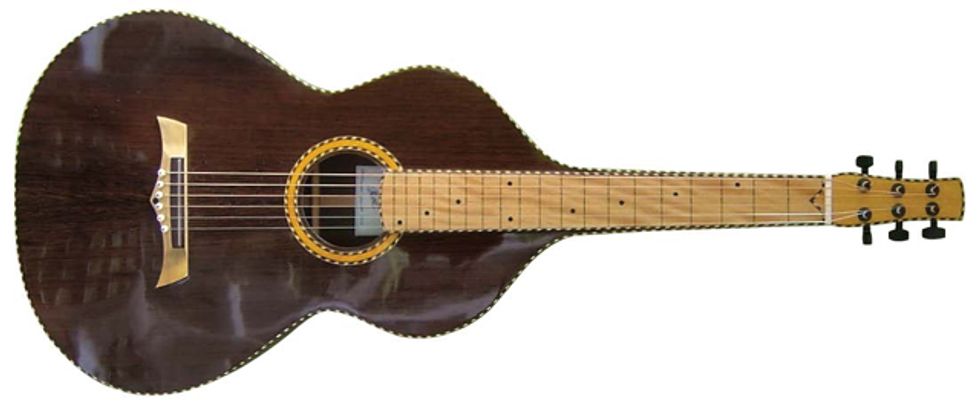
The square-neck Hawaiian lap-slide guitar has a 25 3/16" scale length and a thin body that’s hollow up to its neck block. This particular guitar is made of wenge wood. Dunn’s Weissenborn-inspired instruments typically range from $3000 to $3500.
Pricing and Availability
Pricing is determined on a per-instrument basis due to custom specifications of each guitar. The base price of Dunn’s non-resonator custom guitars is around $4000. The models with interior resonators, such as the Mystery Pacific, Ultrafox, and OM guitars, typically fall between $5000 and $6000. The Bugatti model runs about $15,000, and the Cubist guitar costs roughly $10,000. Dunn builds around 15 guitars a year. Some of his Gypsy-jazz models are available immediately. Otherwise, the availability ranges from six months to a year.
michaeldunnguitars.com


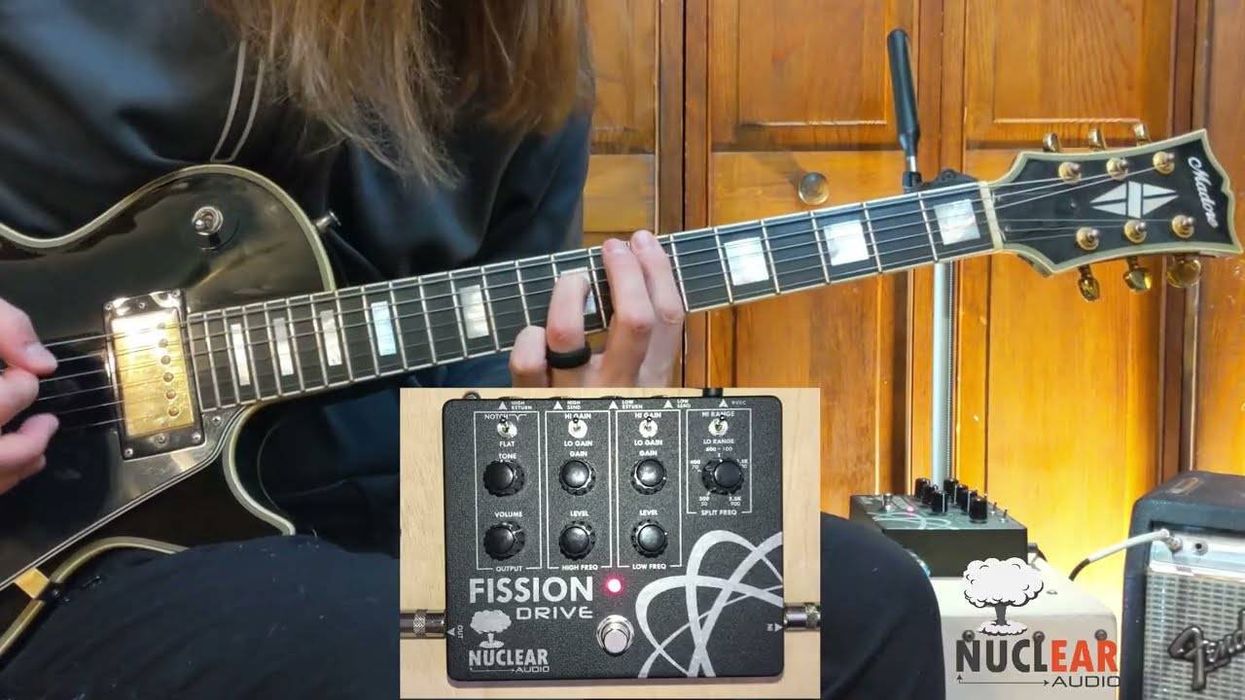








![Rig Rundown: Russian Circles’ Mike Sullivan [2025]](https://www.premierguitar.com/media-library/youtube.jpg?id=62303631&width=1245&height=700&quality=70&coordinates=0%2C0%2C0%2C0)


